- Local Time: 03:49 PM
- Weather: 28 ℃ / 82 ℉
Queen Hatshepsut, Egypt’s fifth pharaoh of the 18th Dynasty, rose to power during her stepson’s youth and declared herself ruler. She legitimized her reign by adopting male symbols of kingship and led Egypt into a prosperous era marked by peace, trade, and grand architectural achievements like the Deir el-Bahri temple. Though later efforts sought to erase her legacy, modern discoveries have reestablished her as one of ancient Egypt’s most influential and visionary female rulers.
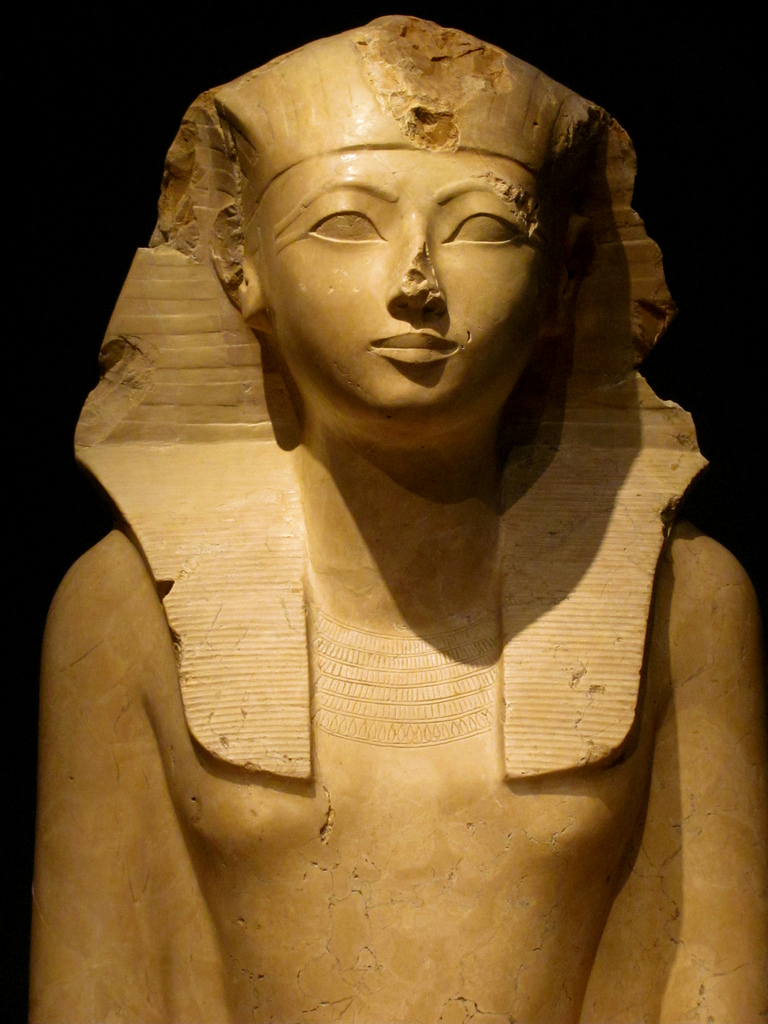
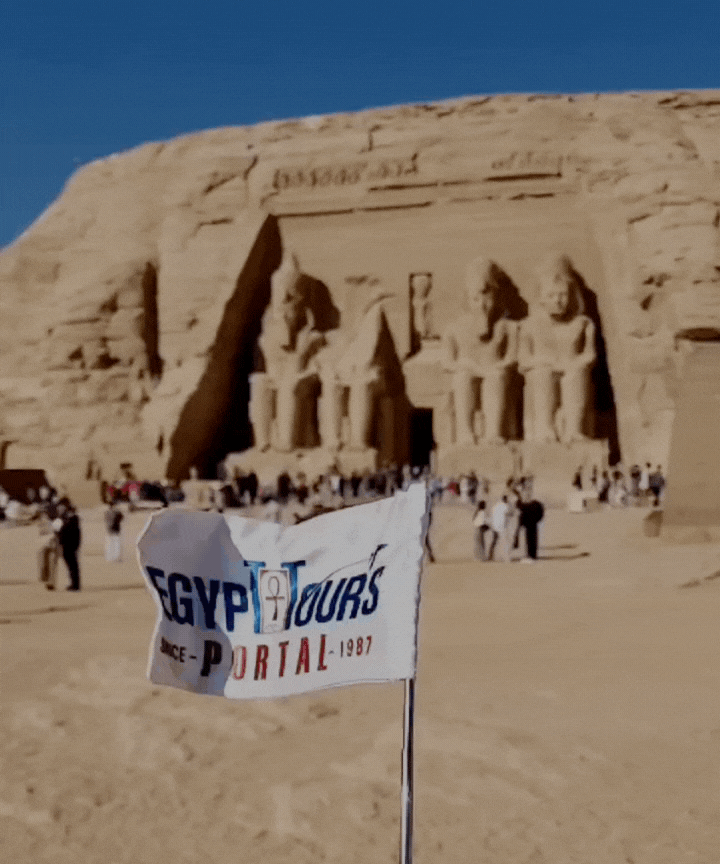
Queen Hatshepsut, whose name means "Foremost of Noble Women," is one of the greatest rulers of Ancient Egypt; she was the fifth pharaoh of the 18th dynasty. In 1508 BC, Hatshepsut was born to King Thutmose I and his wife Queen Ahmose to be his elder daughter and her grandfather, King Ahmose. She ruled beside her father despite the ancient Egyptians rejecting the notion of women ruling them and learned a great deal from him, which would explain how she became one of the most successful rulers in the history of Ancient Egypt.

Hatshepsut is one of ancient Egypt's most influential and pioneering rulers, who ascended to power during the Eighteenth Dynasty (1479–1458 BC) of the New Kingdom of Egypt, a time known for its enchanting ancient Egyptian art, ancient Egyptian architecture, and cultural renaissance. Initially ruling as a regent for her young stepson, Thutmose III, Hatshepsut eventually declared herself pharaoh, a groundbreaking decision as only a few women in Egyptian history had ever claimed such a title.
To solidify her legitimacy, she adopted the traditional symbols of male kingship, including the false beard, shendyt kilt, and Nemes headdress, which were depicted in her statues and temple reliefs. This bold adoption of male iconography was a strategic move to assert her authority in a male-dominated society.
Hatshepsut’s reign was marked by a period of unprecedented peace, stability, and prosperity. She focused on monumental construction projects, including her famous Mortuary Temple at Deir el-Bahri, to establish her legacy. Hatshepsut also revived the ancient Egyptian economy through expanded trade networks, launching her famous expedition to the Land of Punt.
This economic diplomacy brought wealth and resources to Egypt, allowing it to fund its ambitious building projects, including numerous temples, shrines, and statues dedicated to Amun and other deities. Hatshepsut’s reign has since been recognized as a transformative era that left a lasting impact on Egypt’s historical and cultural legacy.
Explore the marvelous history and characteristics of the Women of Ancient Egypt
Read More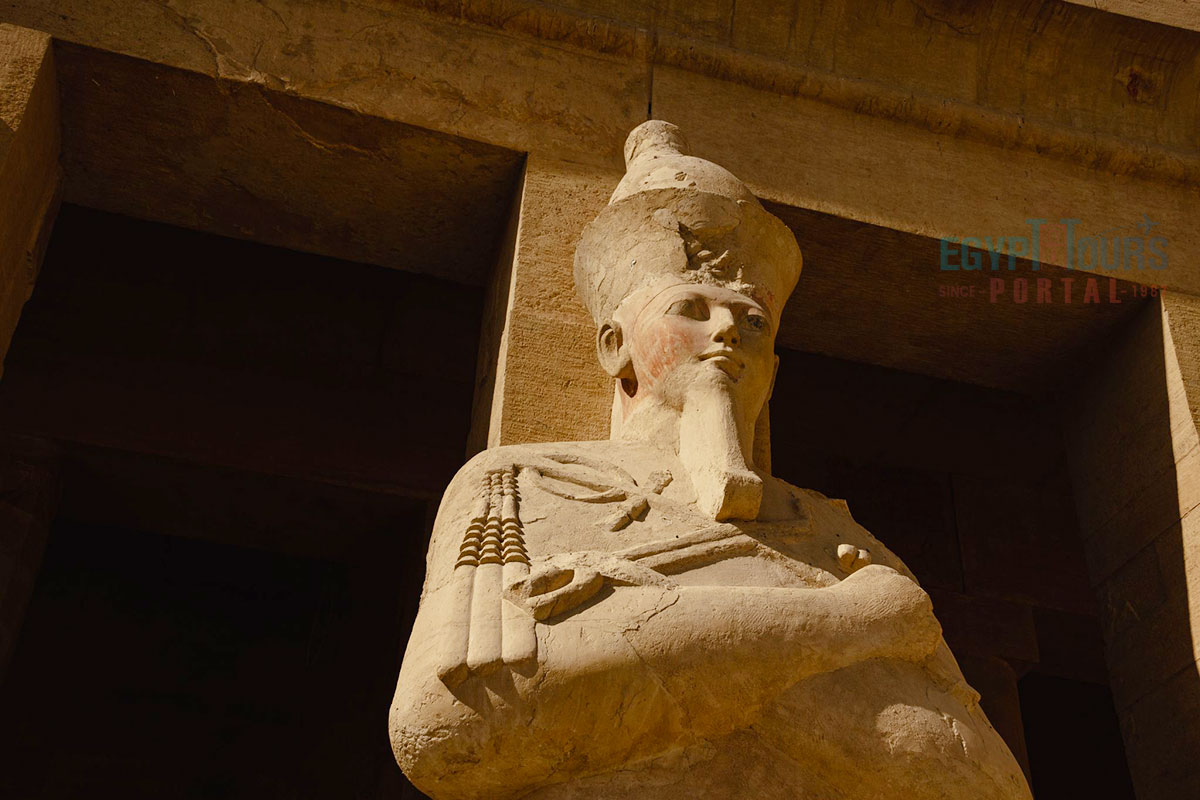
She was born to Pharaoh Thutmose I and his principal wife, Queen Ahmose. Hatshepsut was part of a powerful lineage within the Eighteenth Dynasty, which established Egypt’s dominance through both military and diplomatic prowess. To maintain her family’s royal bloodline, she married her half-brother, Thutmose II, a common practice among Egyptian royals to preserve dynastic continuity. Hatshepsut bore a daughter, Neferure, but no sons, which left her stepson Thutmose III (the son of a secondary wife) as the heir to the throne upon Thutmose II's death.
After Thutmose II’s death, Hatshepsut initially assumed the role of regent for her young stepson. However, over time, she transitioned from regent to co-ruler, declaring herself pharaoh. Her close advisor, Senenmut, who was also her daughter’s tutor and chief architect, played a key role in her administration and her monumental construction projects. Her family connections within the Eighteenth Dynasty, which included influential figures such as Amenhotep I and later rulers like Akhenaten and Tutankhamun, bolstered her authority and helped her secure her position.
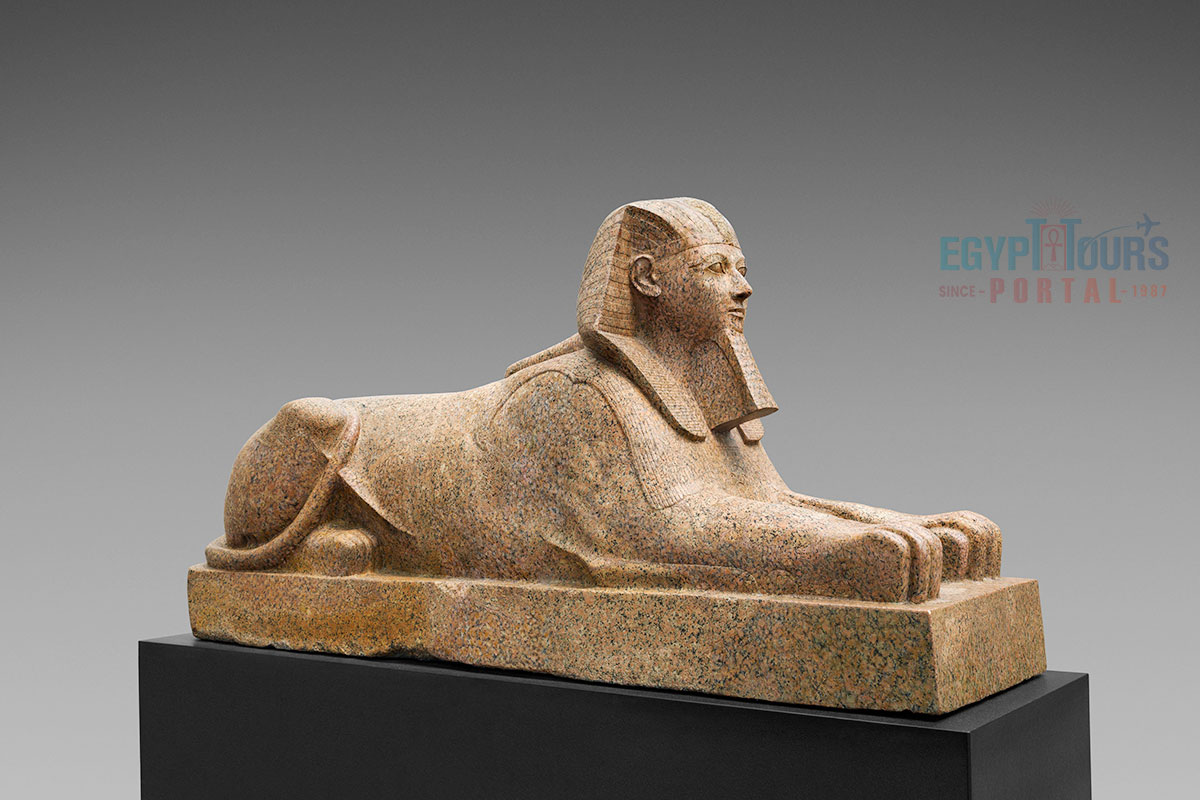
Queen Hatshepsut's reign as the Queen started when she married her half-brother Thutmose II in 1492 BC, who was the son of Thutmose I from a minor wife, Lady Mutnofret. He was a man of weak character and poor health, so Hatshepsut ruled Egypt in the name of the King as his wife. Hatshepsut had only one daughter from her husband Thutmose I, Neferu-Ra. Hatshepsut was elevated to the stature of God’s Wife of Amun, the second-highest position for a woman in Ancient Egypt after the Queen.
Hatshepsut was preparing herself to be the pharaoh after her husband died, but after Thutmose II's death, the Egyptians rejected the idea of a woman ruling them as a Queen, so they made Thutmose III the king, who was only two years old at the time, and Hatshepsut ruled as regent to her step-son.
Thutmose III was the son of Thutmose II from his minor wife Iset. Hatshepsut had influential supporters, including Senenmut, her chief minister, who helped her to be the true pharaoh with the full authority of a king. She is to be portrayed with a beard and muscles, and appears in traditional female regalia.
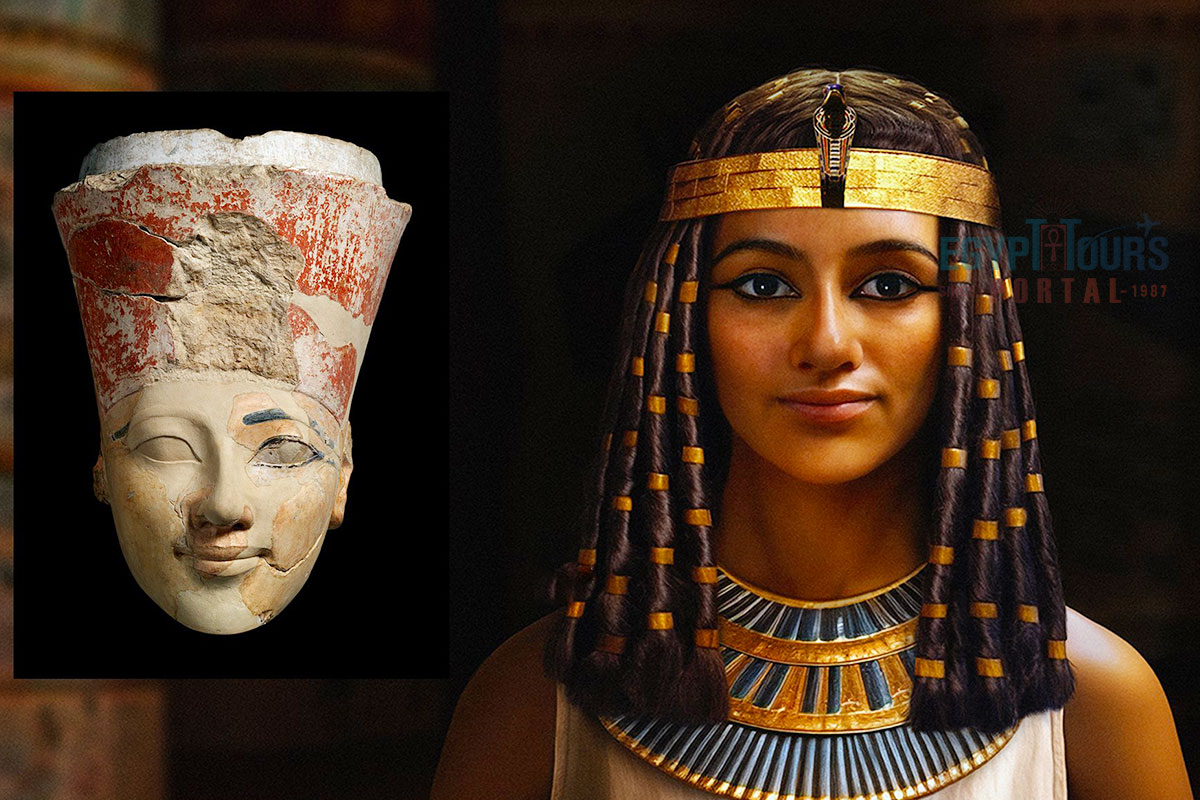
Though ancient depictions of Hatshepsut often portray her with traditionally masculine attributes like the ceremonial beard, shendyt kilt, and crown, these elements were symbolic of her pharaonic authority. Artistic depictions suggest that she may have had a slender, dignified appearance, often shown wearing the Nemes headdress or the Khat cloth, both symbols of Egyptian royalty.
Some of her statues also portray her in a feminine manner, with a delicate, serene face, which highlights the duality of her public image: one that respected traditional Egyptian royal conventions while asserting her unprecedented role as a female pharaoh. In 2007, an unidentified mummy from the Valley of the Kings, now believed to be Hatshepsut, offered clues about her health and physical traits.
Analysis of this mummy revealed that she may have suffered from dental issues and arthritis, as well as a likely case of bone cancer. Her preserved remains give modern historians a glimpse into her physical appearance and health challenges, shedding light on her life as both a ruler and a woman in ancient Egypt.
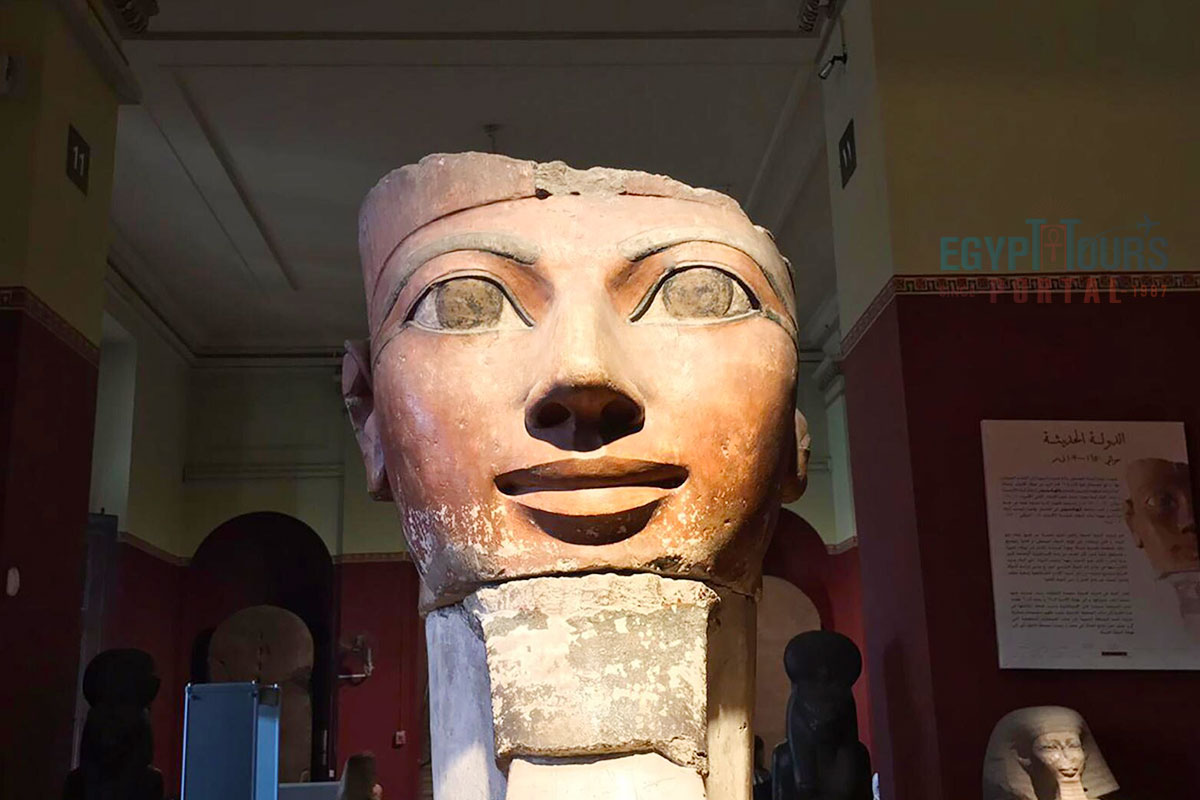
Hatshepsut was known for her intelligence, resilience, and strategic thinking. Her reign was characterized by a dedication to economic growth, monumental architecture, and a nuanced approach to leadership. She adopted the male symbols of kingship, not as a rejection of her femininity but as a strategic move to reinforce her authority.
Her focus on trade and diplomacy over military conquests marked a unique approach to rulership, emphasizing stability and prosperity. Her devotion to the god Amun shaped her policies, as she often attributed her right to rule to divine endorsement, which helped legitimize her unprecedented position as a female pharaoh.

Queen Hatshepsut's era was prosperous & peaceful as she made friendships with neighboring countries. Using trade with the help of great ships, she sent many seaborne trading expeditions to the kingdom of a punt and to the Atlantic Ocean, which returned with ancient Egyptian gold, baboons, myrrh, ebony, wild animals, and more treasures. She also sent many military campaigns to Syria and Nubia.
She made her step-son Thutmose III a leader in many of the campaigns, protecting the country and expanding the Egyptian empire. While she managed the affairs of the country, she married him to her daughter Neferu-Ra, who was given the title of God’s Wife of Amun.

Hatshepsut’s achievements were groundbreaking, with her reign becoming synonymous with architectural innovation and economic prosperity. Queen Hatshepsut immortalized her legacy through an array of grand architectural projects that rivaled those of the most celebrated pharaohs. She commissioned the construction of her iconic Mortuary Temple at Deir el-Bahri, which is renowned not only for its scale but for its architectural elegance, blending harmoniously with the cliffs of the surrounding Theban mountains.
It was designed by her trusted chief minister and architect, Senenmut. The temple at Deir el-Bahri remains a masterpiece of ancient Egyptian classical architecture, celebrated for its three grand terraces that rise symmetrically from the desert plain.
The temple was dedicated primarily to the god Amun, whom Hatshepsut claimed had chosen her as Egypt’s rightful ruler, and also honored Hathor and Anubis. Intricate reliefs and paintings adorn the walls, illustrating Hatshepsut's divine birth, her coronation, and moreHer famous expedition to Punt, depicted on the walls of her temple, expanded Egypt’s trade routes, bringing back exotic goods such as incense trees, gold, and ebony.
These resources helped fund her ambitious projects, and the peaceful prosperity under her rule set a new standard for subsequent pharaohs. This expedition is vividly depicted on the temple walls, symbolizing the prosperity of her reign and her commitment to expanding Egypt’s influence through peaceful trade.
Hatshepsut also contributed significantly to the monumental Karnak Temple complex, the religious heart of ancient Egypt. She erected several grand obelisks, which stood as symbols of her piety and dedication to Amun. Among these was one of the tallest obelisks in Egypt at the time, towering nearly 30 meters (about 97 feet) high. Her contributions to Karnak included a remodeling of the Hypostyle Hall, adding her touches to honor both her father, Thutmose I, and Amun.
Another testament to her building ambitions is the massive “Unfinished Obelisk” at Aswan, ordered by Hatshepsut to be carved directly from the bedrock. The obelisk, had it been completed, would have been the tallest ever erected. Today, the unfinished monument provides valuable insight into ancient Egyptian quarrying techniques, showcasing how the skilled laborers would have carved and extracted these massive stone structures.
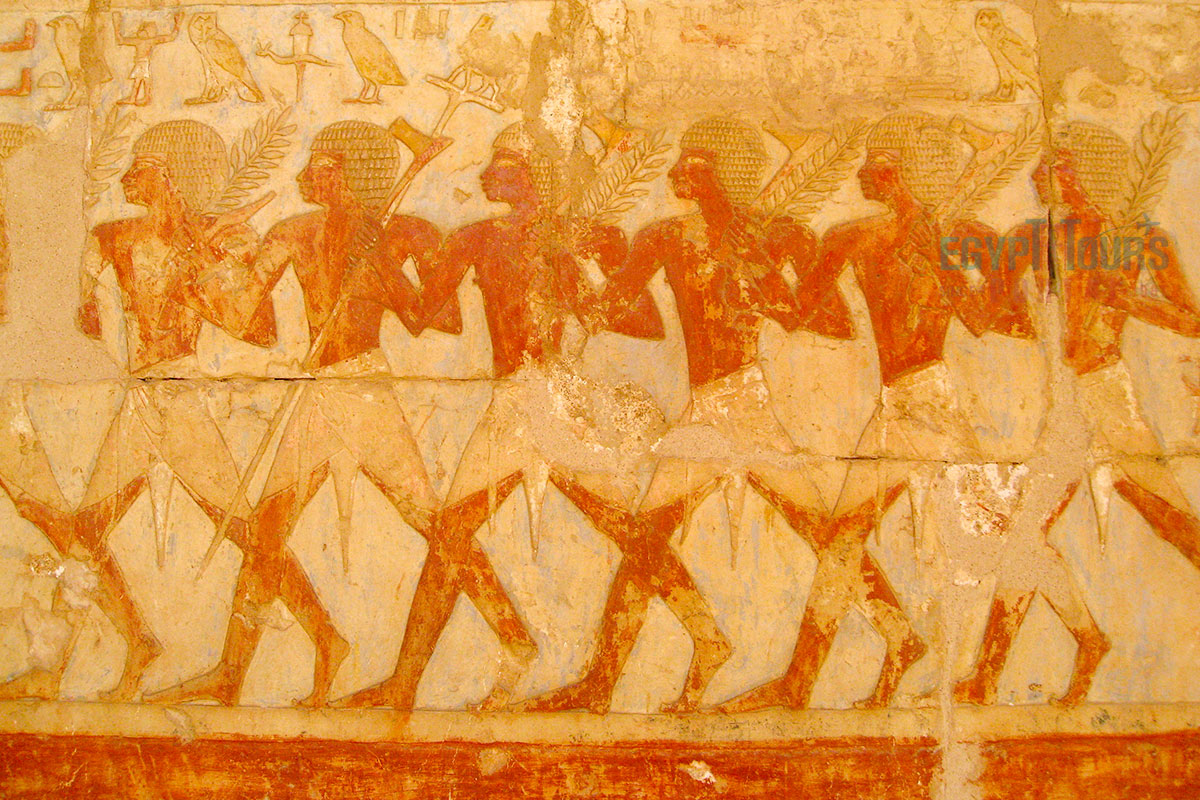
Hatshepsut revived and expanded Egypt’s trade networks, which had been disrupted in previous eras. Her most famous commercial venture was the expedition to the Land of Punt, which brought back valuable goods that included myrrh trees, exotic animals, ivory, and gold. This journey is depicted in vivid detail at her Mortuary Temple, which was a diplomatic and economic triumph that strengthened Egypt’s wealth and resources.
She also established or re-established trade links with other regions, including Byblos and the Sinai Peninsula, importing luxury goods and raw materials for her construction projects. Her trade policies reflected her vision of Egypt as a prosperous, self-sufficient nation and underscored her diplomatic prowess.
Discover the magnificent trade of the ancient Egyptian civilization
Read More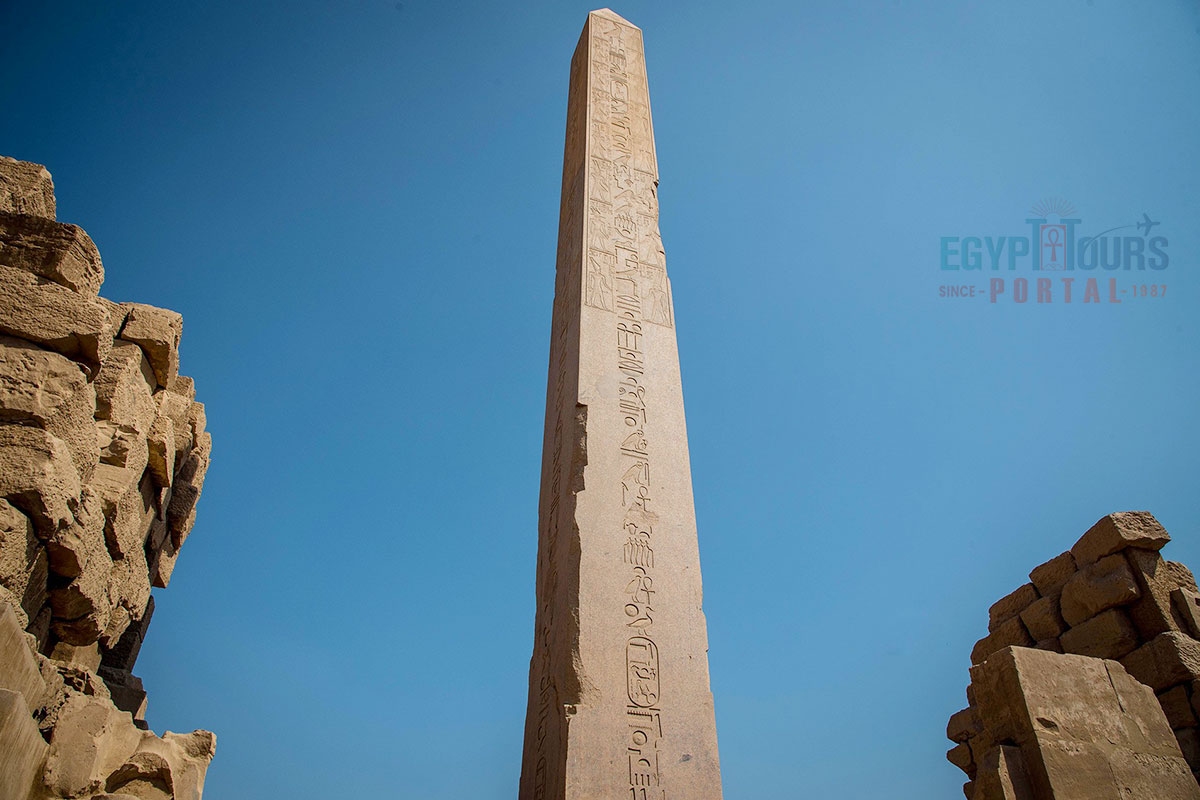
Ancient Egyptian artifacts attributed to Hatshepsut provide a fascinating glimpse into her reign and personality. Among her funerary items are a lioness throne, a senet board game, and a ring bearing her seal, all reflecting her status and power. Her statuary and reliefs, particularly those at her Mortuary Temple at Deir el-Bahri, depict her in various forms, from masculine pharaoh to graceful queen. These artifacts reveal her adaptability and determination to maintain authority in a patriarchal society.
One of the most significant artifacts connected to Hatshepsut is the “Unfinished Obelisk” at Aswan. This massive stone, abandoned due to a crack, offers invaluable insights into ancient Egyptian construction techniques, including quarrying and carving methods. Additionally, fragments of a canopic box with her name and a mummified liver believed to be hers were discovered, indicating the care taken in her burial preparations. Her artifacts highlight her ambition, piety, and the skilled craftsmanship of her era.
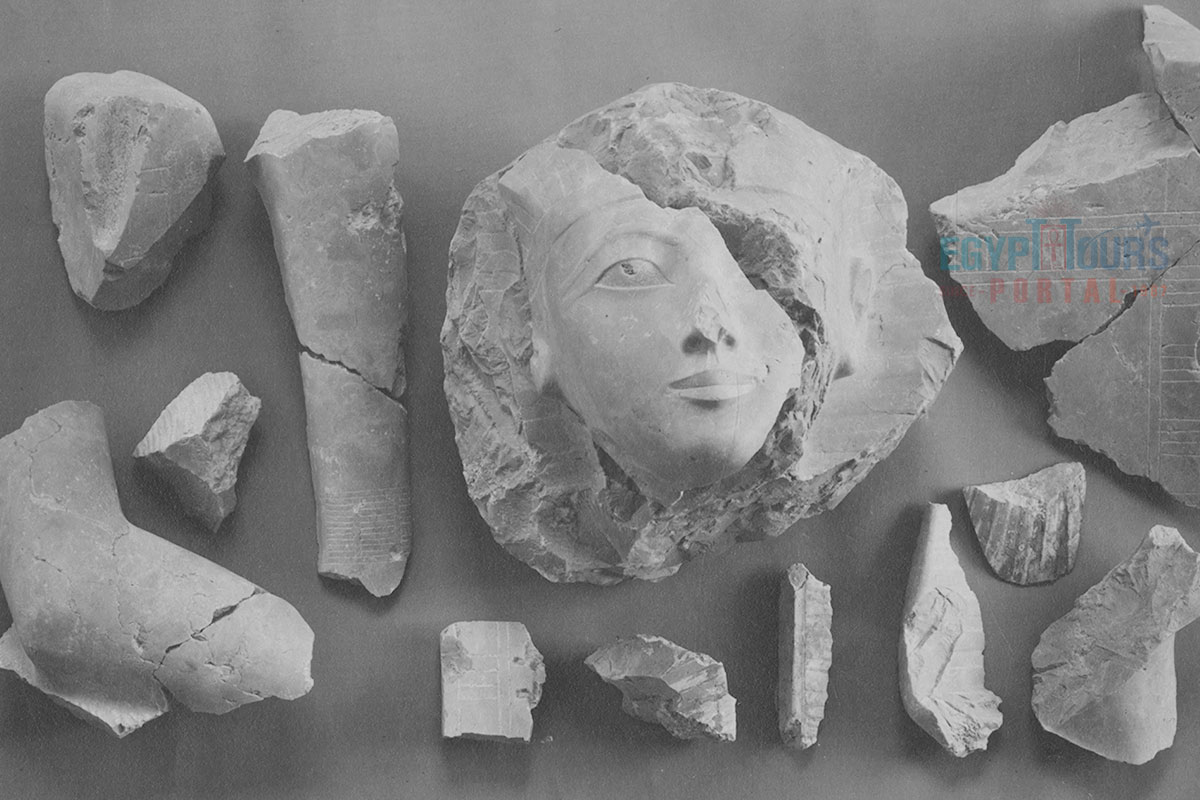
Queen Hatshepsut passed away in 1458 BC, likely in her mid or late 40s. Modern forensic examinations suggest she may have died from complications of an abscessed tooth, which might have led to a severe infection. Further medical analyses indicate she may also have suffered from diabetes and advanced bone cancer in her final years. Her preserved body and remaining artifacts suggest chronic health issues that likely intensified toward the end of her life.
In preparation for her burial, Hatshepsut took steps to ensure her eternal union with her father. She expanded her father Thutmose I’s tomb in the Valley of the Kings, creating a double tomb designed for both of them. This act emphasized her desire for continuity in the royal lineage and her close identification with her father’s legacy.
After her death, however, her stepson and successor, Thutmose III, later relocated Thutmose I's body to a new tomb, possibly an effort to remove Hatshepsut from certain dynastic records. Yet, despite efforts to erase her memory, Hatshepsut’s remarkable accomplishments, from her architectural projects to her trade expeditions, have endured, cementing her as one of Egypt’s most extraordinary and resilient rulers.
If you prefer to visit Egypt and witness all these archaeological sites in Lower and Upper Egypt and discover more information about ancient Egyptian civilization and Queen Hatshepsut, then you can check our Egypt vacation and Nile river cruises, in order to choose your memorable trip.
Private 4 Days Cairo Tour Packages for Australian Travelers 4 days Cairo Egypt Tour ...
Tour Location: Cairo – Giza...
5 Days Cairo and Alexandria Tour Package For Australian Travelers 5 days Cairo and A...
Tour Location: Cairo/Giza/Alexandria...
6 Days Cairo, Luxor & Aswan Tour Package For Australian Travelers 6 days Cairo, ...
Tour Location: Cairo/Giza/Aswan/Luxor...
Amazing 7 Days Cairo and Hurghada Holiday for Australian Travelers 7 Days Cairo &...
Tour Location: Cairo – Giza – Hurgh...
Hatshepsut was one of the first women to rule as pharaoh in ancient Egypt and is remembered for her effective and prosperous reign. She focused on trade and monumental construction, and under her leadership, Egypt enjoyed stability, economic growth, and impressive architectural achievements. Her reign marked a peaceful era in which Egypt’s cultural and economic power expanded significantly.
Hatshepsut was particularly associated with Amun, the creator god and chief deity of Thebes. She often depicted herself as Amun’s chosen ruler, and her mortuary temple at Deir el-Bahri was dedicated to him. Her alignment with Amun’s divine will helped legitimize her reign and reinforced her position as a divinely appointed pharaoh.
After her death, Hatshepsut’s images and inscriptions were defaced, likely under the orders of her successor, Thutmose III, or later rulers. This erasure was probably intended to eliminate her from the official king lists and emphasize a direct male succession. This systematic removal may have been motivated by a need to restore traditional male dominance in the pharaonic line, as well as to reinforce Thutmose III’s legacy without a co-regent.
Hatshepsut was born in Thebes (modern-day Luxor), one of ancient Egypt’s major religious and cultural centers.
The entire country of Egypt deserve to be explored with its every heavenly detail but there are places that must be seen before any other such as the breathtaking Hurghada's red sea, The wonders of Cairo the pyramids of Giza, the great sphinx, the Egyptian Museum, Khan El Khalili Bazaar, the wonders of Luxor like Valley of the Kings, Karnak & Hatshepsut temple and the wonders of Aswan such as Abu Simbel temples, Philea temple, Unfinished obelisk and The Wonders of Alexandria like Qaitbat Citadel, Pompey's Pillar and Alexandria Library. Read more about the best places to visit in Egypt.
If you want to apply for a Visa On Arrival that lasts for 30 days then you should be one of the eligible countries, have a valid passport with at least 6 months remaining and pay 25$ USD in cash, as for the E-Visa for 30 day you should have a valid passport for at least 8 months, complete the online application, pay the e-visa fee then print the e-visa to later be presented to the airport border guard. You could also be one of the lucky ones who can obtain a free visa for 90 days. Read more about Egypt travel visa.
Egypt has a variety of delicious cuisines but we recommend “Ful & Ta’meya (Fava Beans and Falafel)”, Mulukhiya, “Koshary”, a traditional Egyptian pasta dish, and Kebab & Kofta, the Egyptian traditional meat dish.
The best time to travel to Egypt is during the winter from September to April as the climate becomes a little tropical accompanied by a magical atmosphere of warm weather with a winter breeze. You will be notified in the week of your trip if the Climate is unsafe and if any changes have been made.
You should pack everything you could ever need in a small bag so you could move easily between your destinations.
We have been creating the finest vacations for more than 20 years around the most majestic destinations in Egypt. Our staff consists of the best operators, guides and drivers who dedicate all of their time & effort to make you have the perfect vacation. All of our tours are customized by Travel, Financial & Time consultants to fit your every possible need during your vacation. It doesn't go without saying that your safety and comfort are our main priority and all of our resources will be directed to provide the finest atmosphere until you return home.
You will feel safe in Egypt as the current atmosphere of the country is quite peaceful after the government took powerful measures like restructuring the entire tourist police to include all the important and tourist attractions in Egypt. Read more about is it safe to travel to Egypt.
Wear whatever feels right and comfortable. It is advised to wear something light and comfortable footwear like a closed-toe shoe to sustain the terrain of Egypt. Put on sun block during your time in Egypt in the summer to protect yourself from the sun.
The best activity is by far boarding a Nile Cruise between Luxor and Aswan or Vise Versa. Witness the beauty of Egypt from a hot balloon or a plane and try all the delicious Egyptian cuisines and drinks plus shopping in old Cairo. Explore the allure and wonders of the red sea in the magical city resorts of Egypt like Hurghada and many more by diving and snorkeling in the marine life or Hurghada. Behold the mesmerizing western desert by a safari trip under the heavenly Egyptian skies.
There are a lot of public holidays in Egypt too many to count either religious or nation, the most important festivals are the holy month of Ramadan which ends with Eid Al Fitr, Christmas and new years eve. Read more about festivals & publich holidays in Egypt.
Egypt is considered to be one of the most liberal Islamic countries but it has become a little bit conservative in the last couple of decades so it is advised to avoid showing your chest, shoulders or legs below the knees.
Arabic is the official language and Most Egyptians, who live in the cities, speak or understand English or at least some English words or phrases. Fewer Egyptians can speak French, Italian, Spanish, and German. Professional tour guides, who work in the tourism sector, are equipped to handle visitors who cannot speak Arabic and they will speak enough English and other languages to fulfill the needs of all our clients.
The fastest way is a car, of course, a taxi. If you are in Cairo ride a white taxi to move faster or you could board the fastest way of transportation in Egypt metro if the roads are in rush hour.
The temperature in Egypt ranges from 37c to 14 c. Summer in Egypt is somehow hot but sometimes it becomes cold at night and winter is cool and mild. The average of low temperatures vary from 9.5 °C in the wintertime to 23 °C in the summertime and the average high temperatures vary from 17 °C in the wintertime to 32 °C in the summertime. The temperature is moderate all along the coasts.
It is the home of everything a traveler might be looking for from amazing historical sites dating to more than 4000 years to enchanting city resorts & beaches. You will live the vacation you deserve as Egypt has everything you could possibly imagine.









